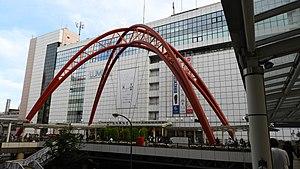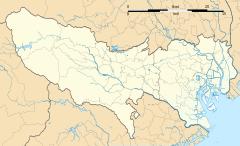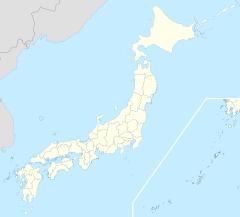JC19 JN26 Tachikawa Station 立川駅 | ||||||||||||||||||||||||||||||||||||||||||||||||||||||||||||||||||||||||||||||||||||||||||||||
|---|---|---|---|---|---|---|---|---|---|---|---|---|---|---|---|---|---|---|---|---|---|---|---|---|---|---|---|---|---|---|---|---|---|---|---|---|---|---|---|---|---|---|---|---|---|---|---|---|---|---|---|---|---|---|---|---|---|---|---|---|---|---|---|---|---|---|---|---|---|---|---|---|---|---|---|---|---|---|---|---|---|---|---|---|---|---|---|---|---|---|---|---|---|---|
 Lumine Department Store above Tachikawa Station | ||||||||||||||||||||||||||||||||||||||||||||||||||||||||||||||||||||||||||||||||||||||||||||||
| Location | 2-1-1 Akebono-cho, Tachikawa-shi, Tokyo Japan | |||||||||||||||||||||||||||||||||||||||||||||||||||||||||||||||||||||||||||||||||||||||||||||
| Operated by | ||||||||||||||||||||||||||||||||||||||||||||||||||||||||||||||||||||||||||||||||||||||||||||||
| Line(s) |
| |||||||||||||||||||||||||||||||||||||||||||||||||||||||||||||||||||||||||||||||||||||||||||||
| Platforms | 4 island platforms | |||||||||||||||||||||||||||||||||||||||||||||||||||||||||||||||||||||||||||||||||||||||||||||
| Other information | ||||||||||||||||||||||||||||||||||||||||||||||||||||||||||||||||||||||||||||||||||||||||||||||
| Website | www | |||||||||||||||||||||||||||||||||||||||||||||||||||||||||||||||||||||||||||||||||||||||||||||
| History | ||||||||||||||||||||||||||||||||||||||||||||||||||||||||||||||||||||||||||||||||||||||||||||||
| Opened | 11 April 1889 | |||||||||||||||||||||||||||||||||||||||||||||||||||||||||||||||||||||||||||||||||||||||||||||
| Passengers | ||||||||||||||||||||||||||||||||||||||||||||||||||||||||||||||||||||||||||||||||||||||||||||||
| FY2014 | 160,347 daily | |||||||||||||||||||||||||||||||||||||||||||||||||||||||||||||||||||||||||||||||||||||||||||||
| Services | ||||||||||||||||||||||||||||||||||||||||||||||||||||||||||||||||||||||||||||||||||||||||||||||
| ||||||||||||||||||||||||||||||||||||||||||||||||||||||||||||||||||||||||||||||||||||||||||||||
| Location | ||||||||||||||||||||||||||||||||||||||||||||||||||||||||||||||||||||||||||||||||||||||||||||||
Tachikawa Station (立川駅, Tachikawa-eki) is a railway station in Tachikawa, Tokyo, Japan, operated by the East Japan Railway Company (JR East).
Lines
Tachikawa Station is served by the Chūō Main Line, and is located 37.1 kilometers from the starting point of the line at Tokyo Station. It is also a terminus for both the Ōme Line and Nambu Lines. Although the Itsukaichi Line does not reach Tachikawa, a few trains on that line continue along the Ome Line tracks to serve this station.
Station layout
This station consists of four ground-level island platforms serving eight tracks, with an elevated station building located above the platforms. The station has a "Midori no Madoguchi" staffed ticket office. Tachikawa-Minami Station and Tachikawa Kita Station on the Tama Toshi Monorail Line flank Tachikawa Station, and are connected to it by decks. The Lumine department store occupies the upper floors of the station building.
Platforms
| 1,2 | JC Ōme Line | for Haijima, Ome, Oku-Tama JC Itsukaichi Line for Musashi Itsukaichi (via Haijima) (Starting service here) |
| 3 | JC■ Chūō Line | for Mitaka, Shinjuku, Tokyo Chūō Line Limited Express Azusa, Super Azusa, Kaiji, Narita Express |
| 4 | JC Chūō Line (Rapid) | for Mitaka, Shinjuku, Tokyo (Starting service here) |
| JC Ōme Line | for Haijima, Ome, Oku-Tama JC Itsukaichi Line for Musashi Itsukaichi (via Haijima) (Early morning) | |
| 5 | JC■ Chūō Line | Chūō Line (Rapid): for Hachioji, Takao, Otsuki Chūō Main Line: for Otsuki, Kofu and Matsumoto (Starts service here) |
| JC Chūō Line (Rapid) | for Mitaka, Shinjuku, Tokyo (Starts service here) | |
| JC Ōme Line | for Haijima, Ome, Oku-Tama JC Itsukaichi Line for Musashi Itsukaichi (via Haijima) ■ Hachikō Line for Komagawa (via Haijima) (Trains from the Chūō Line through service to Ōme Line will stop at this platform) | |
| 6 | JC■ Chūō Line | Chūō Line (Rapid): for Hachioji, Takao, Otsuki Chūō Main Line: for Otsuki, Kofu and Matsumoto Chūō Line Limited Express Azusa, Super Azusa, Kaiji, Narita Express |
| JC Ōme Line | for Haijima, Ome, Oku-Tama JC Itsukaichi Line for Musashi Itsukaichi (via Haijima) ■ Hachikō Line for Komagawa (via Haijima) (Trains from the Chūō Line through service to Ōme Line will also stop at this platform) | |
| 7,8 | JN Nambu Line | for Fuchūhonmachi, Noborito, Kawasaki |
Track layout
| Nambu Line to Kawasaki | Chūō Main Line to Takao, Otsuki, Kofu, Matsumoto | |
| Chūō Main Line to Shinjuku, Tokyo |  | |
| Ōme Line to Haijima, Ome, Oku-Tama | ||
History
The Kōbu Railway, which later became the Chūō Main Line, opened the station on April 11, 1889. The Ōme Railway (presently the Ōme Line) and the Nambu Railway (presently the Nambu Line) were connected to the station on November 19, 1894, and December 11, 1929, respectively.[3]
The Itsukaichi Line was also connected to the station from July 13, 1930, to October 11, 1944, via a separate track between Tachikawa and Haijima, which was closed following the integration of the operation of the Ōme and Itsukaichi lines under the Japanese Government Railways in April 1944.[4]
With the privatization of Japanese National Railways (JNR) on April 1, 1987, the station came under the control of JR East.
Passenger statistics
In fiscal 2014 the station was used by an average of 160,347 passengers daily (boarding passengers only), making it the fifteenth-busiest station operated by JR East.[5] The passenger figures for previous years are as shown below.
| Fiscal year | Daily average |
|---|---|
| 2000 | 132,672[6] |
| 2005 | 150,009[7] |
| 2010 | 157,517[8] |
| 2011 | 155,868[9] |
| 2012 | 157,468[10] |
| 2013 | 160,411[11] |
See also
References
- ^ Suzuki, Fumihiko. "Tetsudō Kakusen no Jittai to Mondai o Genchi ni miru (2) - Nanbu Sen, Ōme Sen, Itsukaichi Sen (2)". The Railway Journal (in Japanese). Tetsudō Jānaru Sha (March 2000, No. 401): 77.
- ^ Inoue, Kōji (2009). Haisenryakuzu de Hirogaru Tetsu no Sekai - Rosen o Yomitoku & Tsukuru Hon (in Japanese). Shūwa Shisutemu. p. 139. ISBN 978-4-7980-2200-0.
- ^ Ishino, Tetsu; et al., eds. (1998). 停車場変遷大事典 国鉄・JR編 [Station Transition Directory - JNR/JR] (in Japanese). II. Tokyo: JTB Corporation. pp. 69, 178, 193. ISBN 4533029809.
- ^ Ishino, supra, p. 198, vol. II
- ^ 各駅の乗車人員 (2014年度) [Station passenger figures (Fiscal 2014)] (in Japanese). Japan: East Japan Railway Company. 2015. Retrieved 5 May 2016.
- ^ 各駅の乗車人員 (2000年度) [Station passenger figures (Fiscal 2000)] (in Japanese). Japan: East Japan Railway Company. Retrieved 2 September 2014.
- ^ 各駅の乗車人員 (2005年度) [Station passenger figures (Fiscal 2005)] (in Japanese). Japan: East Japan Railway Company. Retrieved 2 September 2014.
- ^ 各駅の乗車人員 (2010年度) [Station passenger figures (Fiscal 2010)] (in Japanese). Japan: East Japan Railway Company. Retrieved 2 September 2014.
- ^ 各駅の乗車人員 (2011年度) [Station passenger figures (Fiscal 2011)] (in Japanese). Japan: East Japan Railway Company. Retrieved 2 September 2014.
- ^ 各駅の乗車人員 (2012年度) [Station passenger figures (Fiscal 2012)] (in Japanese). Japan: East Japan Railway Company. Retrieved 2 September 2014.
- ^ 各駅の乗車人員 (2013年度) [Station passenger figures (Fiscal 2013)] (in Japanese). Japan: East Japan Railway Company. Retrieved 2 September 2014.
External links
- Station information (JR East) (in Japanese)

